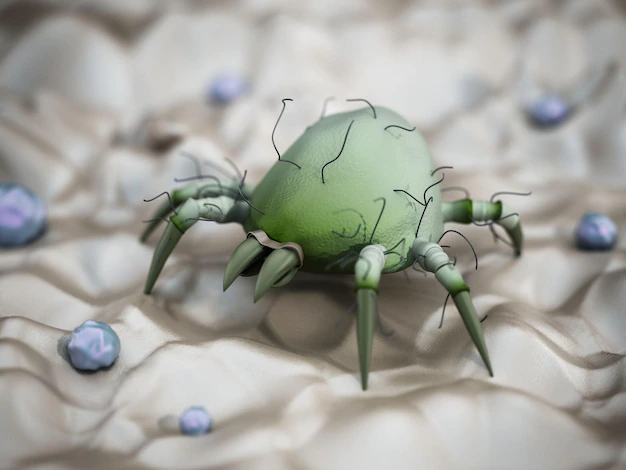Dust mites: A Common Indoor Allergen

Dust mites are microscopic arachnids that feed on dead skin cells and thrive in warm, humid environments such as bedding, carpets, and upholstered furniture. While dust mites themselves are harmless, their fecal matter and body parts can trigger allergic reactions in some people, making them a common indoor allergen.
Here are some important things to know about dust mites:
- Causes: Dust mites are primarily found in bedding, carpets, and upholstered furniture, where they thrive in warm, humid environments. When disturbed, dust mite fecal matter and body parts can become airborne and trigger an allergic reaction.
- Symptoms: Symptoms of a dust mite allergy can vary but may include sneezing, runny nose, nasal congestion, itchy and watery eyes, coughing, and difficulty breathing. In some cases, dust mite allergy can also trigger asthma symptoms.
- Diagnosis: Diagnosis of a dust mite allergy often involves a combination of medical history, physical exam, and allergy testing. Skin prick testing and blood tests can help identify the specific allergen that is causing the reaction.
- Treatment: Treatment for dust mite allergy may involve reducing exposure to dust mites by washing bedding in hot water, using allergen-proof covers for pillows and mattresses, vacuuming regularly with a HEPA filter, and removing carpets and upholstered furniture. Medications such as antihistamines, decongestants, and nasal corticosteroids may also be recommended to alleviate symptoms.
- Prevention: There are several steps you can take to prevent dust mite allergy symptoms, such as reducing humidity in the home, using air conditioning or dehumidifiers, and using a HEPA air filter. Regular cleaning and dusting of surfaces can also help reduce dust mite populations.
In conclusion, dust mites are a common indoor allergen that can trigger a range of symptoms in some people. If you are experiencing symptoms of a dust mite allergy, seek medical attention to identify the allergen and receive appropriate treatment. With proper management, many people with dust mite allergies are able to live normal, healthy lives.
